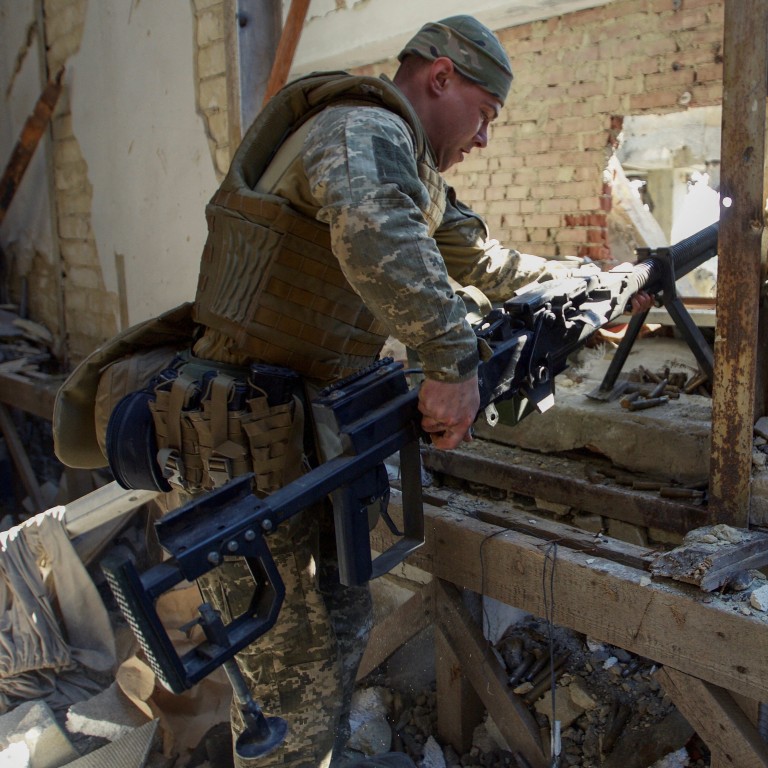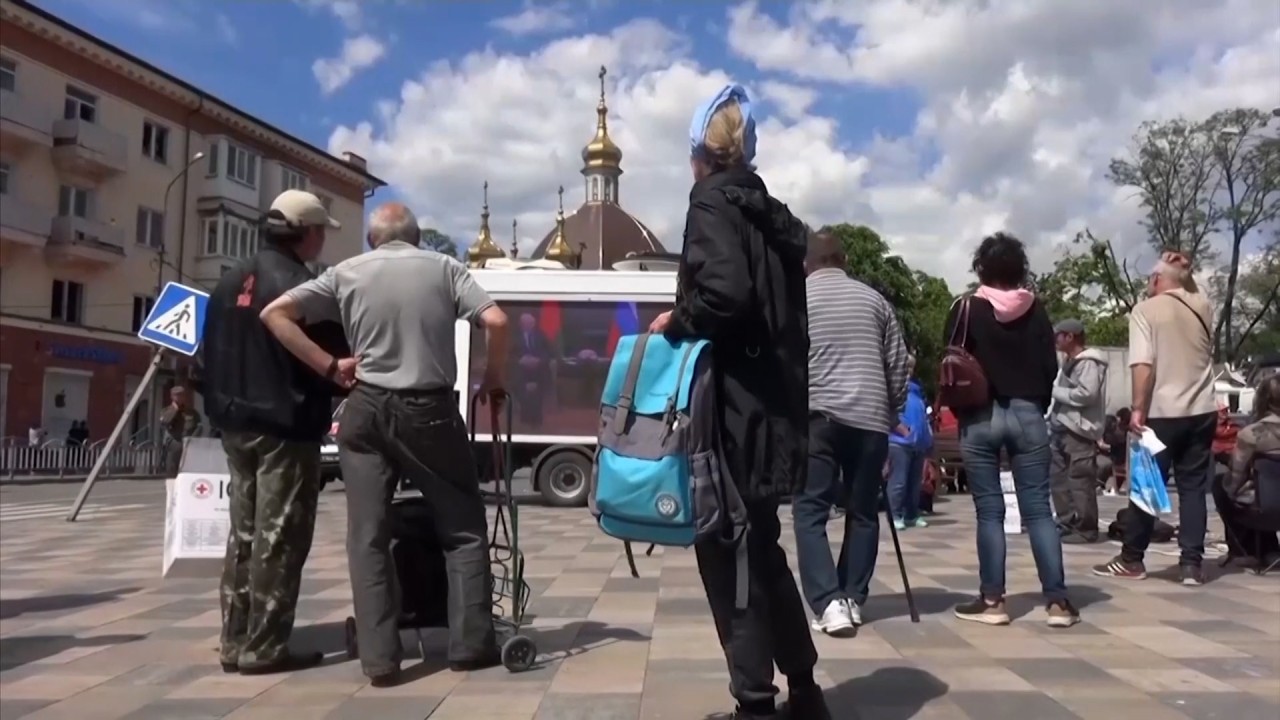
In 100 days, Russia’s invasion of Ukraine turns to war of attrition
- Vladimir Putin sent his troops over the border on what he called a special military operation on February 24 to disarm and ‘denazify’ Ukraine
- After failing to capture Kyiv, Russian forces have edged closer to claiming a big prize in their offensive in the eastern Donbas region
Russia’s failure to capture Ukrainian capital Kyiv and topple the government in the first days and weeks of its attack on its neighbour have prompted it to reduce its reach, focusing on a slow squeeze in the eastern Donbas region as the war passes its 100th day.
This week, Russian troops have solidified their hold on parts of the vital city of Sievierodonetsk, and Ukrainian President Volodymyr Zelensky acknowledged that “the situation in the Donbas remains extremely difficult”.
“The steamroller is indeed advancing, if laboriously,” said Mathieu Boulegue of British military think-tank Chatham House.
“This isn’t a military conquest” of the kind Russia might have hoped for.
“In the coming weeks, Moscow will be forced to switch from a war of movement to fighting from fixed positions,” he predicted.
“It hasn’t renewed its equipment, its forces are exhausted. The positions will soon freeze in place.”
Weapons for Ukraine: Who has sent what?
President Vladimir Putin’s war, launched on February 24 to horror in the West, may have fallen short of its initial objectives.
But with the fall of the key port of Mariupol, Russian troops have established a land link to the occupied Crimean peninsula.
Further progress in the Donbas would be welcome news for the Kremlin, which continues to describe the assault as a “special military operation” rather than a war.
Although it was the largest invasion in Europe since World War II, Russia’s 160,000 troops barely outnumbered the Ukrainian defenders at the start.
Military experts say attackers should aim to outweigh defenders by three to one.
And Moscow’s forces failed to establish air superiority over Ukraine.
Russia’s strength was divided into three thrusts: against Kyiv, in the east and in the south.
Ukraine’s dispersed forces were able to take a heavy toll on their opponents, thanks in part to years of Nato training, as well as supplies of anti-tank and anti-aircraft weapons from Western allies.
Within a month, Putin decided to focus his efforts on the eastern Donbas region, hoping to overwhelm the Ukrainians and alleviate the grievous limitations shown up in the Russian military machine.
Wheat cannot be ‘weapon of war’, Pope says, urging lifting of Ukraine block
Ukraine’s east is “closer to Russia and closer to their organic supply lines and capabilities,” Pentagon spokesman John Kirby said Friday.
“And so you can see them being mindful and wary of getting too far out ahead of their supplies” as they did early in the war.
On the tactical level, “they’re using smaller units now in smaller places and smaller movements, and so it’s a little bit easier for them to integrate air support for their operations on the ground,” he added.

Although Russian artillery is now battering Ukrainian positions in the Donbas, “they’re dug into the ground in trenches” and won’t easily be dislodged, expert Boulegue said.
“The battle for the Donbas is far from over,” French military historian Michel Goya wrote in a blog post. For him, the eastern front was “becoming like a decisive battle that will absorb efforts in the coming weeks”.
The Kremlin’s aim is “to reach the administrative borders of the Donbas”, former French special forces general Christophe Gomart told broadcaster RTL on Tuesday.
Russia takes most of Sievierodonetsk city in eastern Ukraine
In the near term “I think they’ll have a real operational pause, because we have two armies that have been fighting one another for three months already and are exhausted. It’s becoming a war of attrition”.
According to the Russian government’s latest official numbers – which were released back in late March – 1,351 troops have been killed in Ukraine.
Western intelligence agencies have placed the Russian death toll somewhere between 7,000 and 15,000. Ukraine’s official numbers put the Russian death toll as high as 30,000.

This week, Zelensky said that between 60 and 100 Ukrainian soldiers were dying on the battlefield every day, and another 500 wounded.
“The situation in the east is very difficult,” Zelensky told Newsmax.
Beyond human casualties, open-source intelligence material evaluated by the Oryxspioenkop blog suggests Russia has lost around 739 tanks, 428 other armoured vehicles, 813 infantry fighting vehicles, around 30 fighter planes, 43 helicopters, 75 drones and nine navy vessels – including the Black Sea flagship Moskva.
Ukraine gathers Russian dead in chilled train for prisoner exchange
Figures for the Ukrainian side range around 185 tanks, 93 armoured vehicles, 22 planes, 11 helicopters and 18 ships.
“Ukraine may lose territory in the short term, but Russia faces major problems with sustaining its military effort in the long term, on holding on to gains,” said Michael Kofman, of the US-based CNA think-tank.
Already, Ukrainian counter-attacks around the southern cities of Mykolayiv and Kherson show that “these positions are contested” rather than locked down by Moscow, Boulegue said.
Like Gomart, Mark Cancian, of the US-based CSIS think-tank, predicted “a long war of attrition.
“Neither side seems willing to compromise or make a deal … Until one side decides, you may get an informal pause, a sort of low-level frozen conflict,” he added.
US Secretary of State Antony Blinken said there were no signs of Russia pulling back its forces: “As best we can assess right now, we are still looking at many months of conflict”.

.png?itok=arIb17P0)
